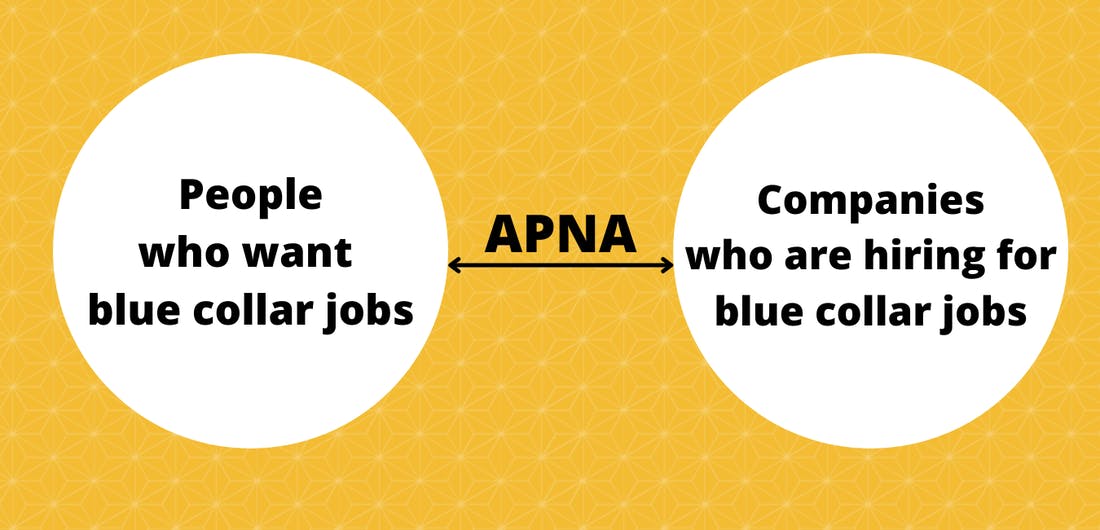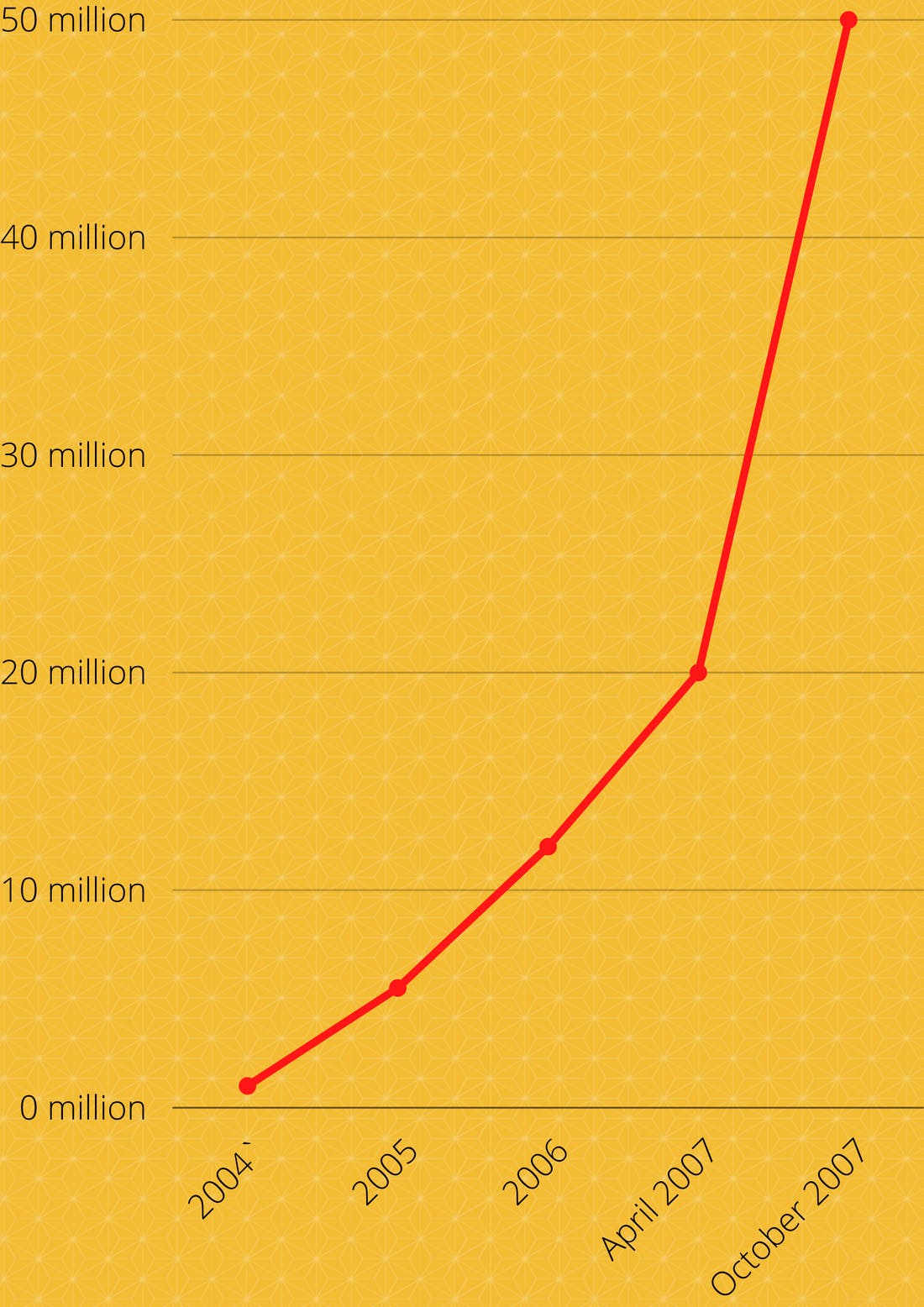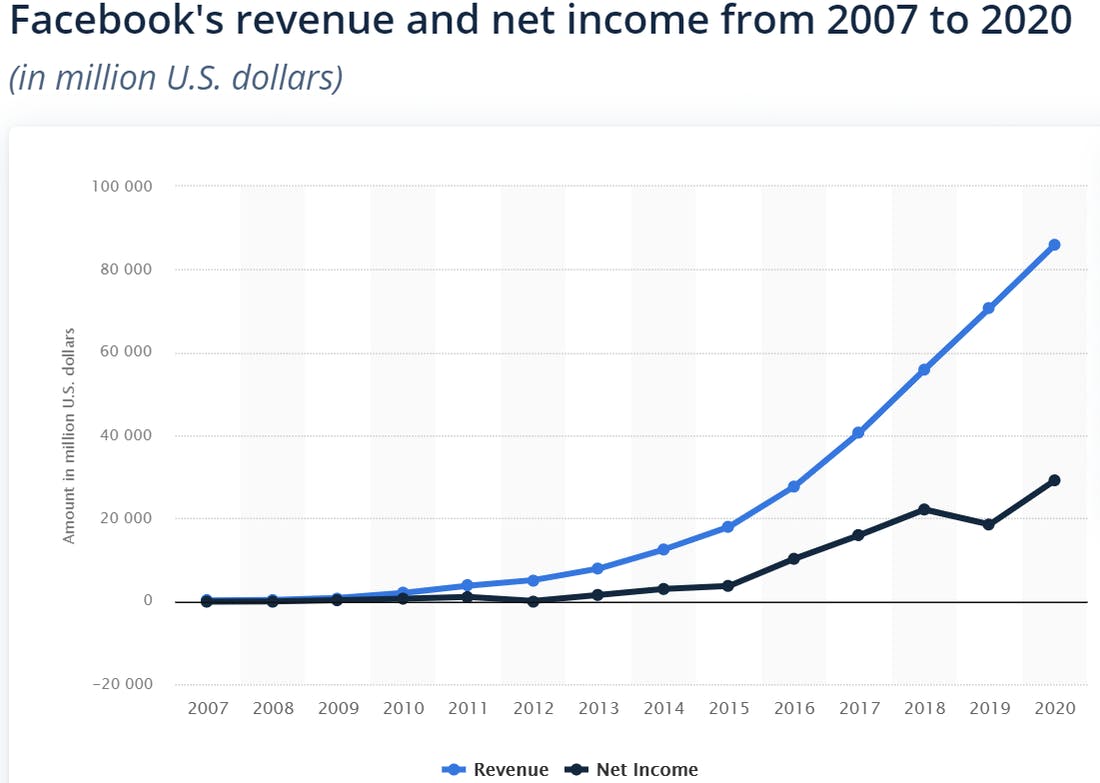Subscribe
Sign in
The unicorn startup with zero revenue?

Share On
Yep! That's Apna.
Shreyans Singh is the author of Integral, your guide to the Indian Technology ecosystem, and tweets about tech and startup insights. Subscribe to Integral🕹️ here.
When Apna became a unicorn, the headline on all news websites was “India’s fastest unicorn”. But all the news websites ignored one crucial fact:
It's been almost 2 years, yet Apna makes zero revenue!
That's right! No, I'm not talking about profits. That comes afterward. Right now, Apna hasn't even started making money.
Why?
That's today's article is about:
What is Apna?
Why Apna’s revenue is zero?
How will Apna make revenue?
Let's go🚀🚀
🕹What is Apna?
LinkedIn and Indeed and Naukri.com are job platforms for white-collar employees like coders, product managers, designers, etc.
But the world has other types of employees as well: receptionists, beauticians, drivers, etc. They are called blue-collar employees. Why is there no job platform for them?
This was the question facing Nirmit Parikh, a Stanford MBA and former employee of Apple and Intel.
The blue-collar market is huge: India has over 300 million blue-collar workers, and this number increases by 10% every year. Yet, no one was paying attention. Sure, a few companies tried to enter this market, but they failed.
So Nirmit decided to enter this market.
But he soon realized that he knew nothing about the blue-collar market. So spent many days at a manufacturing site in Ahmedabad, working undercover as a factory worker, so he could better understand this target audience at a deeper level(hustle and dedication💯).
While working there, he had an insight: factory workers wanted more than a job platform. They wanted a place to connect with and learn from other workers.
Nirmit found his eureka moment and Apna was born!

(fun fact- the name is derived from the phrase "Apna time aayega" from Gully Boy)
Apna started as a simple app for job listings: you could search for a job and apply to that.
Soon, they built a professional community on top of this job platform. The app has 70+ channels(kinda like Discord or Slack channels) for different types of work and members meet and network and learn there. As Nirmit Parikh said to Forbes:
I’m a strong believer in peer-to-peer learning. I think you just need to get people in a group and the magic starts.
Today, Apna has over 16 million users from India’s emerging working class. Over 150,000 Indian businesses including Swiggy, Zomato, and Delhivery use Apna to augment their workforce, and over 18 million job interviews take place every month.
Now, they are adding upskilling courses for blue-collar workers in the app so that people can learn the skills and then apply for jobs.
This is what Apna's business looks like👇

🕹Why Apna’s revenue is zero?
Alright, now you have a pretty good idea about Apna- the idea, the company, the story, the business. Now I'll tell you why Apna isn't making revenue.
At first glance, zero revenue seems stupid, right? After all, Apna has so many users. It can easily monetize and earn lots of revenue.
Then why is it not monetizing?
This same question was asked to another company 15 years ago.
That company was Facebook.
For 3 years, from 2004 to 2007, Facebook made zero revenue.
Their situation was just like Apna: Lots of users, lots of funding, crazy growth, yet zero revenue.
It's not as if Mark Zuckerberg didn't know how to monetize his website.
In 2004, Facebook tried monetizing through a product called Facebook Flyer.

But this was just an experiment. In an interview with The Harvard Crimson, he said that the flyers were just to pay for server bills.
The reason Facebook didn't monetize for 3 years is because of a strategy that I'm calling the "Facebook Monetization Strategy".
Stage 1 of FMS says that when your startup is growing crazy fast, it means you have achieved something rare, something special. So you should focus only on growing your startup. At this stage, don't even think of making money. By focusing only on growth, you can achieve market dominance. After your startup becomes dominant in the market, then you can do monetization aaraam se.
So for 3 years, Facebook focused only on growth. They expanded to more colleges, added more features, attracted more age groups so that they become the dominant social network. They didn't even think of monetizing. And the result?

Facebook's user growth in the 3 years from 2004 to 2007
Apna is also following the "Facebook Monetization Strategy".
It’s been 21 months since their founding, and they have been laser-focused on growing the startup:
- reaching more users
- adding more companies
- introducing upskilling courses
Once they become the dominant job platform for blue-collar workers, they can start monetizing.
The strategy is working: Apna has become the largest job platform for blue-collar workers in India. But the expansion is not over: they are still not available everywhere in the country. So they are expanding to more locations to capture more markets as quickly as possible.
🕹How will Apna make revenue?
Alright, now you know why Apna has zero revenue.
But when the right time comes, how will they make revenue? Even Facebook started to make revenue at some point in time, right?
I told you that Apna isn't making revenue because it's following Facebook's model. So if we want to understand how Apna will make revenue in the future, we will again look at Facebook.
How did Facebook make money?
This is where Stage 2 of "Facebook Monetization Strategy" comes in.
Stage 2 says once you have established a solid user base and have achieved market dominance, you can start monetizing. But you must keep the core part free. You should monetize by adding layers on top of the core part.
Facebook kept the main website free: anyone could make an account and use Facebook for free. They monetized by adding layers on top.

The first layer was Facebook ads, which they added in 2007. Companies could use this to show ads to FB users. Then in 2011, they added another layer: Sponsored Stories. These are also ads, but they appeared in users' feeds. In 2012, another layer: Mobile ads. These were basically, ads on the FB app. In 2016, the 4th layer: Sponsored Messages. Companies could send ads through FB dm's.
I'm not telling you all this because I want to give you a crash course in Facebook Advertising.
My goal is to show you the power of the “Facebook Monetization Strategy”. By waiting for 3 years and establishing a solid user base, Facebook comfortably established its dominance in the market. And then, it monetized by adding layers on top. The result?

Statista
Blue line is the revenue. Look how exponentially it has grown over the years. That's the power of the "Facebook Monetization Strategy".
I think this is how Apna will also make revenue.
Apna will also keep its core part free: anyone can make an account and search for a job on Apna for free. They can monetize by adding layers on top.
Ads will be the first layer of monetization for Apna. They can introduce job ads for companies.
The second layer of monetization will be the distribution product. As Nirmit Parikh said:
There is a distribution product where electrical companies want to reach out to electricians or a wood company wants to reach out to carpenters or a paint company wants to reach to the painters in a geography.
The third layer of monetization is: upskilling courses. As Nirmit Parikh said:
There is the massive opportunity [...] in upskilling workers who come on the platform. Now we're building a skill tech platform for 96 percent of India's workforce. Through education products, we can upskill people.
After reading all this, one thing is certain: once Apna starts to monetize, it will be unstoppable🚀🚀
This wraps up today’s article. I hope you understood the point I’m trying to make. Apna is not making revenue because they are focused on becoming the dominant job platform for blue-collar workers. Once they achieve market dominance, they can easily monetize through ads, courses, etc.
Thanks to Adwait Pisharody for his valuable contributions to today’s article.
–
This article originally appeared in Integral, a newsletter to get smarter about Indian startups.
Comments (6)
Farooq (SF Ali) Zafar@sfali789
Fun read Shreyan. Respectfully, minor correction: receptionists, whom, under traditional classification, would seemingly be classified as white-collar workers, are neither white-collar nor blue-collar. They were designated as "pink-collar" workers in the 1970s in the context of the womens' rights movement, particularly the discussion around the proposal and ratification of the Equal Rights Amendment (ERA), mainly to denote their majority-female staffing. 🙂
Share
MindF***
Thanks for reminding us that this has happened before.

Suprememinds
Well written!
Pendapatannya lambat
A great initiative! And in times like these, this will be really helpful. Kudos!
More stories

Mathew Hardy · How To · 3 min read
How to Detect AI Content with Keystroke Tracking

Sanjana Friedman · Opinions · 9 min read
The Case for Supabase

Vaibhav Gupta · Opinions · 10 min read
3.5 Years, 12 Hard Pivots, Still Not Dead
Kyle Corbitt · How To · 5 min read
A Founder’s Guide to AI Fine-Tuning

Chris Bakke · How To · 6 min read
A Better Way to Get Your First 10 B2B Customers
